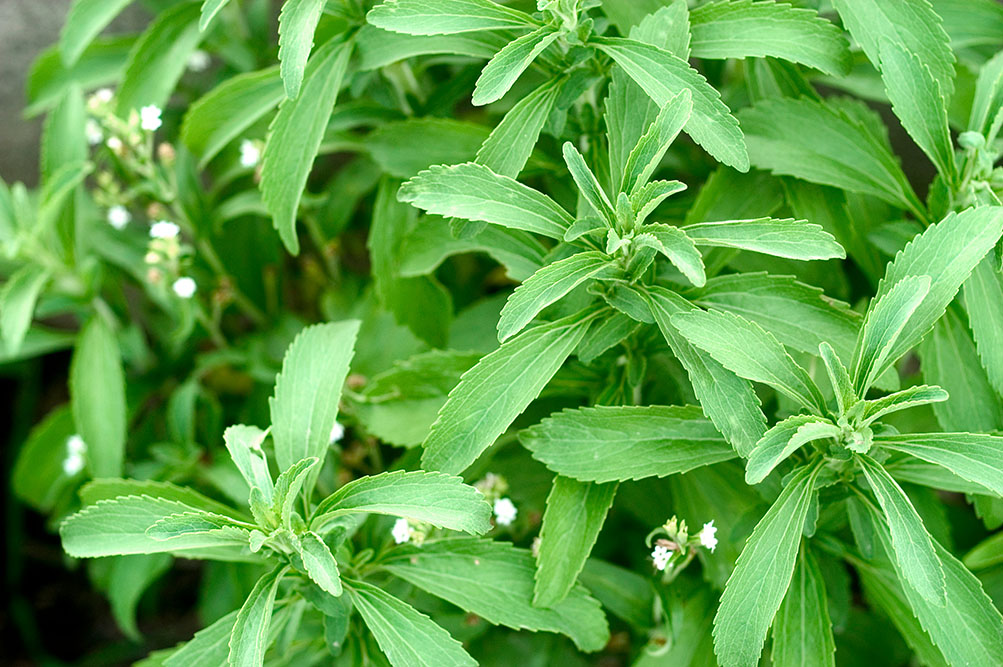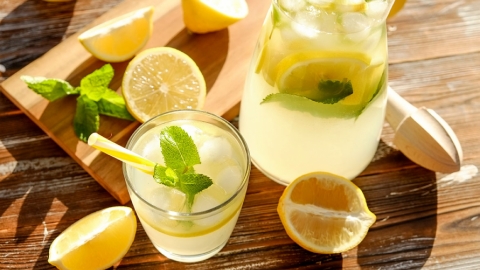Naturally Sweet
Stevia was one of the first plants horticultural therapist and gardening expert Katie McGillivray chose to grow in her garden. “I had heard of and seen stevia powder as a sweetener in the grocery store and was in awe that I could grow it,” she says.
McGillivray's success with growing stevia in her own garden has inspired her to work with Root in Nature, a nation-wide non-profit that encourages the therapeutic benefits of gardening. She provides educational workshops on plants, nature and wellness, teaching people how garden with stevia, a tricky but rewarding plant to grow.
“I love working with stevia,” she says. “It’s a great way to learn how to germinate seeds, take cuttings, overwinter a plant and harvest it.”
Stevia’s trek to McGillivray’s garden started more than a century ago. In 1901, Swiss botanist Moisés Bertoni discovered the plant in the forests of Paraguay. Known in Guarani (the Paraguayan language) as ka’a he’e, or “the sweet herb,” stevia was used by the region’s Indigenous populations as a medicinal herb to regulate blood sugar, not as a sweetener.
In a 1928 Washington Post report on the plant, the writer noted that stevia’s strong licorice aftertaste made it an unlikely candidate as a sugar alternative. But that all changed in 1931 when French researchers identified glycosides in stevia’s leaves. By steeping dried leaves in water then removing the leaves and further purifying the extract with water or food-grade alcohol, a commercial-grade sweetener could be created.
Today, highly refined stevia sweeteners appear on store shelves everywhere. But, as sweet as these products are, they don’t compare to the natural stevia McGillivray grows and harvests in her garden. It’s a plant, McGillivray says, “that teaches patience.”
Taking its sweet time
To grow stevia from seed, the process starts indoors six to eight weeks before the last spring frost. Sow stevia in seed trays just below the surface of the soil at a depth of one centimetre. Place the seed trays under a grow light or in a warm spot at a consistent 21 C. The seeds will start to germinate in two to three weeks. Keep the seedlings indoors until daytime and nighttime temperatures reach a consistent 15 C. Once the seedlings are approximately five centimetres tall, it’s time to plant them in the garden. Start by hardening off the tiny plants by bringing them outside for short periods each day over the course of a week until they can remain out overnight. The seedlings can be planted directly into the herb garden or in containers.
To start stevia from cuttings, clip 10 to 15 centimetres off the leaf of an existing plant and place it in a container of porous potting soil. For the cuttings to root, the air temperature needs to remain at 21 C during the night and warmer during the day. Remember, stevia likes to do things at a slower pace. It will take between four to six weeks before the new cuttings begin to show any signs of new growth.
Once rooted, the more sun stevia gets the faster it will grow until it reaches its full maturity of 30 centimetres wide, and 80 centimetres in height. A thirsty plant, stevia, requires constant watering, but not so much as to waterlog the roots. Not bothered by garden pests or diseases, stevia, however, will not survive temperatures below seven degrees Celsius. To keep the plant growing throughout the winter, move it indoors in early fall to a warm sunny spot.
Sweet harvest
Stevia can be harvested as soon as it has reached 20 centimetres in height. Clip only a few leaves at a time. This keeps the plant growing and ensures a constant and fresh supply. The plant will produce small white flowers that turn the leaves bitter. To prevent this, pinch the flower buds off as they form.
Dry stevia leaves by laying them flat on a screen or tray in the open air or on a cooking rack in an oven set at the lowest possible temperature. When the leaves are crispy and separate easily from the stem, they’re dry. Use a blender or food processor to grind them into a powder and store them in an airtight container. Dry or fresh stevia leaves can be used to sweeten beverages, cereals, fruits, salad dressings, yogurt and desserts. One-eighth teaspoon of dried stevia leaves is equivalent to one teaspoon of sugar. And yes, stevia can be used in cookies and baked goods as a replacement for sugar. The more stevia, the more of a licorice aftertaste.
McGillivray uses stevia leaves as a sweetener for tea. “To me,” she says, “stevia is like bottling up the sweetness of summer and saving it for, quite literally, a rainy day.”
Root in Nature
rootinnature.ca | @root.in.nature






